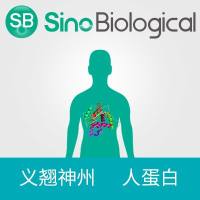CADASIL: Molecular Mechanisms and Animal Models
互联网
691
Cerebral autosomal dominant arteriopathy with subcortical infarcts and leukoencephalopathy (CADASIL) is a human genetic syndrome that causes multiple small strokes, due to a single-gene, autosomal dominant mutation with 100% penetrance. CADASIL mutations encode amino acid substitutions that increase or decrease the number of cysteines within the extracellular epidermal growth factor (EGF) repeat domain of the NOTCH3 receptor protein. Histological studies of CADASIL patients have shown a characteristic accumulation of granular osmiophilic material surrounding the arterial smooth muscle cells, and the degeneration and death of some of these smooth muscle cells. The adjacent endothelial cells appear normal. The result is occasional occlusion of small arteries, producing small infarcts throughout the body, particularly in subcortical white matter in the brain in persons over 50 years of age. Several experimental models related to CADASIL have been investigated, including transgenic mice, knockout mice, cell line expression systems, and Drosophila mutants. None of these models reproduce all the characteristics of human CADASIL, but taken together they have provided an increasingly detailed picture. It is clear that continuing NOTCH3 signaling is required in adult mammalian arterial smooth muscle cells to maintain their survival, differentiation, and normal responses to injury and mechanical stress, particularly in the smaller arteries. In these respects, the characteristics of CADASIL are consistent with a partial loss of NOTCH3 signaling. However, attempts to confirm a loss of NOTCH3 signaling by CADASIL alleles in cell culture have led to mixed results. CADASIL patients do consistently exhibit extracellular accumulation of granular osmiophilic material that contains the extracellular (but not the intracellular) domain of the NOTCH3 receptor. Moreover, the accumulation of the extracellular domain of NOTCH3 has been reproduced in some transgenic mice, as well as in a cell culture model. This gradual accumulation of extracellular aggregates of the NOTCH3 extracellular domain may interfere with NOTCH signaling and may help to explain the characteristically late onset of symptoms of CADASIL. In any case, the well-defined cellular and molecular defects in CADASIL provide a promising area for further research, and the location of the affected cell type could facilitate future drug treatments for this disease.







